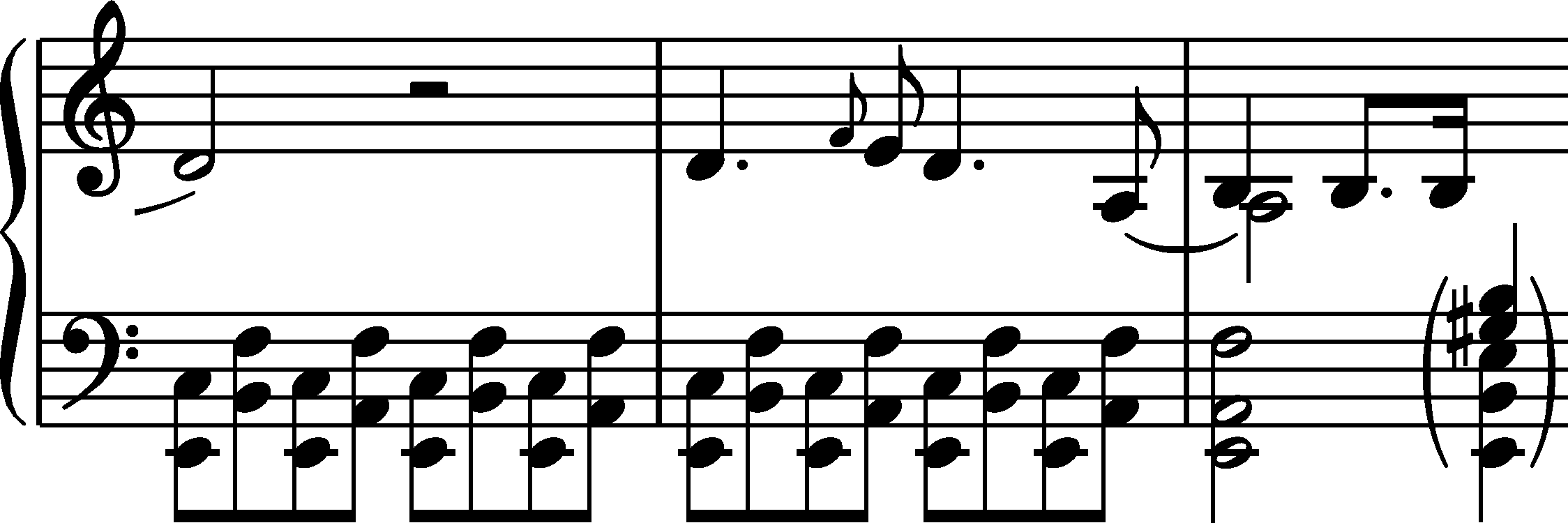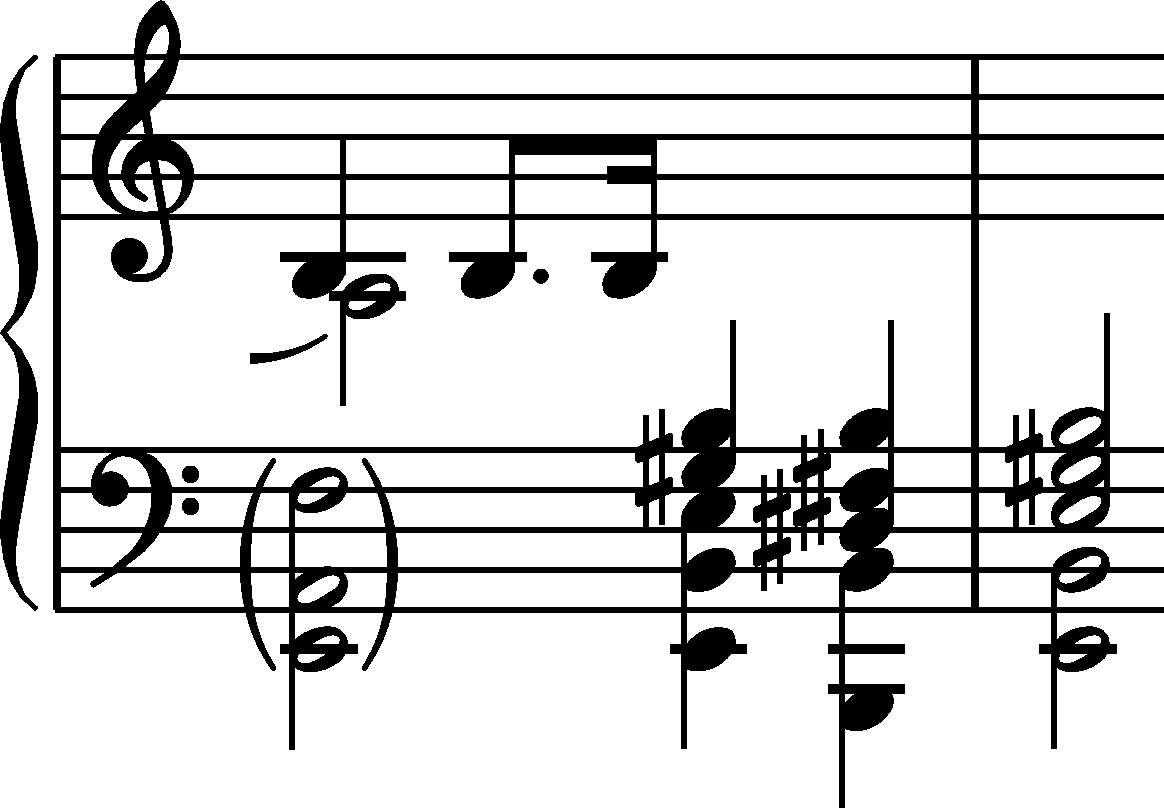



|
b. 17-18
|
composition: Op. 28 No. 2, Prelude in A minor
..
In A Chopin started writing the indication slentando at the end of b. 17, just after the last quaver in that bar. In FC the beginning of that indication occurs slightly earlier, and the handwriting is more condensed, as a result of which, in GE, in which b. 18 opens a new line, slentando was divided into 2 parts; moreover, it was moved further to the left. In FE the entire word was placed in b. 18, which, according to us, better conveys the notation of A. That notation, although not entirely accurately, was also reproduced in EE. category imprint: Differences between sources |
|||||||||||
|
b. 18-19
|
composition: Op. 28 No. 2, Prelude in A minor category imprint: Differences between sources issues: Errors of FC |
|||||||||||
|
b. 18-19
|
composition: Op. 28 No. 2, Prelude in A minor
..
The crossings-out visible in As reveal that the topmost notes of the L.H. part were initially written at the pitch of a, and not f (like in b. 15-16). category imprint: Corrections & alterations; Source & stylistic information issues: Accompaniment changes |
|||||||||||
|
b. 19-21
|
composition: Op. 28 No. 2, Prelude in A minor
..
In As one can see the notation of the initial L.H. part, which was eventually replaced with rests. That notation covers 2 repeat signs of the four-quaver figure from b. 18 in b. 19, the repeat sign of b. 19 in b. 20 and the minim E-A-f chord in the 1st half of b. 21. After expanding the abbreviations, we obtain the following text: category imprint: Interpretations within context; Differences between sources; Corrections & alterations issues: Accompaniment changes |
|||||||||||
|
b. 21
|
composition: Op. 28 No. 2, Prelude in A minor
..
The crossings-out visible in As reveal that the bottom voices of the chords in the 2nd half of the bar were changed twice. The initial version, which was crossed out, continued the previous harmonic filling of b. 19-21 (see the note in b. 19): category imprint: Differences between sources; Corrections & alterations issues: Chopin's hesitations , Accompaniment changes |






 (the versions of the chord in the 2nd half of b. 21 – see the note concerning that bar).
(the versions of the chord in the 2nd half of b. 21 – see the note concerning that bar).

 . Having forgone the accompaniment in the preceding bars, Chopin also crossed out the bottom notes of the crotchet chords, which resulted in a precise gradation of the number of voices: from one in b. 20, through two in the 1st half of b. 21, three and four in the 2nd half, to five and six in b. 22. In the final version, that effect was abandoned in favour of a bass line referring to the quaver figures in b. 18-19, like they refer – also preceded by a rest – to b. 15-16.
. Having forgone the accompaniment in the preceding bars, Chopin also crossed out the bottom notes of the crotchet chords, which resulted in a precise gradation of the number of voices: from one in b. 20, through two in the 1st half of b. 21, three and four in the 2nd half, to five and six in b. 22. In the final version, that effect was abandoned in favour of a bass line referring to the quaver figures in b. 18-19, like they refer – also preceded by a rest – to b. 15-16.